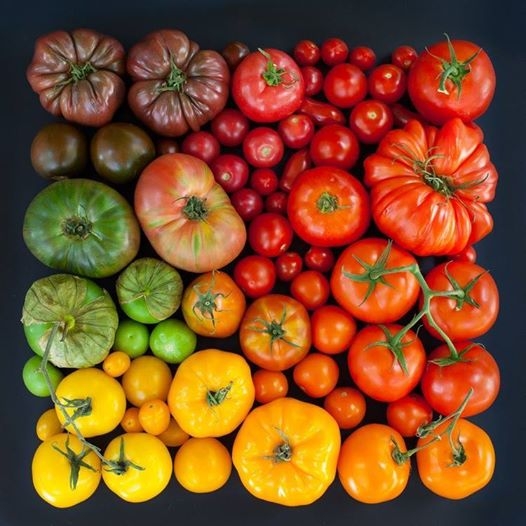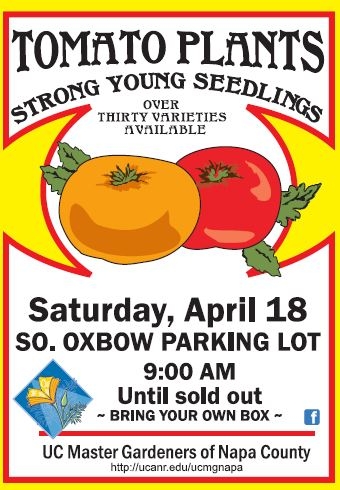
First, don't rush to get those tomatoes in the ground. Wait until the danger of frost is past and the soil is sufficiently warm. Cool temperatures make tomato plants more susceptible to disease and slow growth. Prior to planting, “harden off” the plants by placing them outside in a sheltered location for about a week. Gradually expose them to more sun during the day. If frost threatens, bring the plants indoors or cover them to provide protection.
When you buy tomato plants, pick stocky transplants with healthy green leaves. Inspect the bottom of the container; the plants should not be root bound.
Evaluate locations before deciding where to plant. Choose a spot with full sun. Do not plant tomatoes or other members of the nightshade family (potatoes, eggplants and peppers) in the same location two years in a row to keep soil-borne fungal diseases from getting established.Ideally, wait at least three years before planting nightshades in the same location. If you grow your tomatoes in pots, clean the pots first, and then fill them with new potting mix.
Your plants will be more productive if you give them plenty of room. If you intend to support the plants with stakes or cages, space plants in rows 30 to 42 inches apart, leaving 24 to 30 inches between the plants. If you're going to let the plants sprawl,give them even more room. If you use pots, choose large ones.
Water the plants and the planting areaa few hours before planting. Wait until late afternoon to plant. Pinch off all but the top two sets of leaves, and then bury the plant in the soil up to those top leaves. Avoid handling the stem. New roots will form along the buried stem.
If the plants are in biodegradable pots, break up the pots slightly so the roots can easily grow into the soil. Bury the pots completely to avoid water wicking away from the roots. If the seedlings are in plastic pots, gently remove the seedlings and loosen the roots before planting. Press the soil firmly around the plant, and then water the area thoroughly.
Most tomato plants benefit from some type of support. Cages keep the tomatoes off the ground, maximize garden space, and make harvest easier. Install cages soon after planting to avoid damaging plants. Place two strong stakes on both sides of each cage for additional support when the plant becomes heavy with fruit. Make sure your cage is tall enough for the plant when it's full grown.Cage openings should be large enough for you to reach in and harvest.
Another option is to stake plants. Select stakes 6 feet long and 1-1/2 to 2 inches wide. Drive them 1 foot into the soil approximately 4 to 6 inches from the plant. As the plants grow, pull the stems toward the stakes and loosely tie them to the stakes at intervals of 10 to 12 inches. Use flexible material for ties, such as garden tape or strips of rags. Prune the tomato plants to a few main stems to keep the plants from becoming too heavy.
Water tomatoes to a depth of three feet, generally once a week but more often in hot weather.Apply a three- to four-inch layer of mulch to reduce weeds, retain soil moisture and moderate soil temperature. Extreme fluctuations in soil moisture can cause fruit cracking and blossom end rot.
Wait to fertilize until the plants are flowering and fruits are forming. Feed witha nitrogen fertilizer every four to six weeks, following label instructions. Water thoroughly after fertilizing.
Harvest tomatoes when they develop full color. Keepat room temperature to maintain that just-picked flavor.
Tomato Sale and Education Event: Napa County Master Gardeners are hosting their third annual Tomato Sale on Saturday, April 18. Join us in the South Oxbow parking lot in Napa, 9 a.m. until sold out. We have a bountiful selection of strong, young plants: heirlooms, hybrids, cherry, paste and just plain good eating tomatoes of all sizes. Remember to bring your own box to safely transport your plants home. Click on the link above to read descriptions of the varieties for sale.
Master Gardeners are volunteers who help the University of California reach the gardening public with home gardening information. Napa County Master Gardeners ( http://ucanr.org/ucmgnapa/) are available to answer gardening questions in person or by phone, Monday, Wednesday and Friday, 9 a.m. to Noon, at the U. C. Cooperative Extension office, 1710 Soscol Avenue, Suite 4, Napa, 707-253-4143, or from outside City of Napa toll-free at 877-279-3065. Or e-mail your garden questions by following the guidelines on our web site. Click on Napa, then on Have Garden Questions? Find us on Facebook under UC Master Gardeners of Napa County.
Attached Images:
